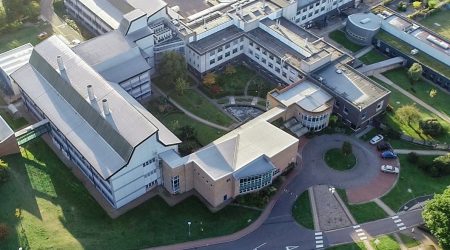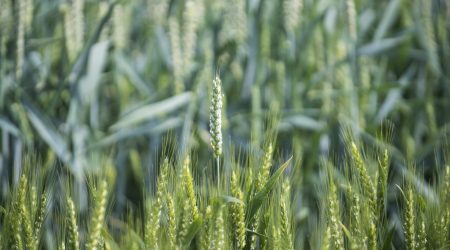Professor Barrie Wilkinson, academic lead for the Molecules from Nature (MfN) institute strategic programme explains how a fundamental understanding of plant-microbe interactions and the molecules involved is needed for the challenges ahead: finding new medicines, feeding people sustainably and combating climate change
Increasingly I see Molecules from Nature becoming Molecules in Nature. It’s been argued that specialised metabolites represent a fourth part of the central dogma of molecular biology after DNA, RNA and protein. They are fundamental to shaping much of biology and recognising that is where Molecules from Nature sits in my mind.”
Professor Wilkinson took over as lead of the institute strategic programme in the summer of 2018, and his group researches the chemistry of life – metabolism – specifically, how organisms such as fungi and bacteria produce an extraordinary array of molecules with agrochemical and pharmaceutically useful properties.
Finding new antibiotics in the face of looming global crisis caused by antimicrobial resistance (AMR) remains an urgent priority as does research into medically relevant molecules which can become the next anti-cancer or anti-ageing treatments.
Additionally, being in a research environment alongside plant and crop scientists with a broad cross-disciplinary outlook at the John Innes Centre, has contributed to a shift in his personal outlook.
“As a trained chemist I was very molecule-centric when I joined the John Innes Centre – I wanted to find new molecules, understand how they were made and find out how they might be relevant to human medicine,” says Professor Wilkinson. “Being here has shifted how I think about what those molecules are doing and what their roles are. I can see that they are at the centre of much of the biology that is going on here and that relates to feeding ten billion people by 2050.”
An interesting and emerging picture is how groups across the MfN ISP are finding a common interest in how molecules mediate the interactions between plants and microbes and how fundamental that is to plant health.
“Anne Osbourn’s group in collaboration with colleagues in the Chinese Academy of Sciences has done brilliant work on how plants are able to shape their own microbiome – molecules produced by plant roots shape their own microbial communities. Matt Hutchings’ group is coming at it from the other direction by understanding the microbial mechanisms involved in the process. The two viewpoints are starting to coalesce.”
Small molecule production in microbes may have its origins in the plant-microbe interactions that enabled the first plants to colonise land.
The actinomycetes are a group of bacteria, for example, that seem to have appeared around the same time as land plants 450 million years ago.
“When you can look at the filamentous growth of those organisms, you can see how it may have been central to how they interacted with plants leading to beneficial relationships with root systems,” Professor Wilkinson says.
Looking ahead the vision is to enhance the interaction of Molecules from Nature with the other ISPs into which science at the John Innes Centre is strategically divided: Plant Health, Designing future Wheat, Genes in the Environment.
Earlier this year the John Innes Centre unveiled its vision for the future called Healthy Plants, Healthy People, Healthy Planet – including a bid for a new building replacing in some cases infrastructure dating back to the 1960s.
A new facility to replace those put together over a period of decades would offer an architectural environment that supports cross and interdisciplinary working.
Professor Wilkinson explains. “The geography of the building is important. I do feel that spread out as we currently are, we miss a lot of opportunities, and clearly a building designed for science in the 2020s with all the research platforms integrated is going to look quite different.”
In this strangest of years with the world fighting a long-predicted pandemic, what place is there for fundamental, curiosity-driven science as part of the solution?
“The fact that it’s not a crazy idea to have the first vaccines available so quickly is predicated on a system that put in place preparedness for a pandemic and that is why vaccines have progressed so rapidly. Even though the potentially disastrous impact of AMR has become better recognised following the O’Neil report of 2016, it still does not feel like the danger has been fully realised in the wider community. With the emergence of a vaccine in such a short time, you see that if you are prepared you can move quickly.”
Antibiotic research involves identifying molecules with antibacterial and antifungal activity and then finding their targets within pathogens.
The problems we face might be solved by findings from some of the earliest interactions between plants and microbes. Not just by identifying natural products but by understanding their biological roles.







